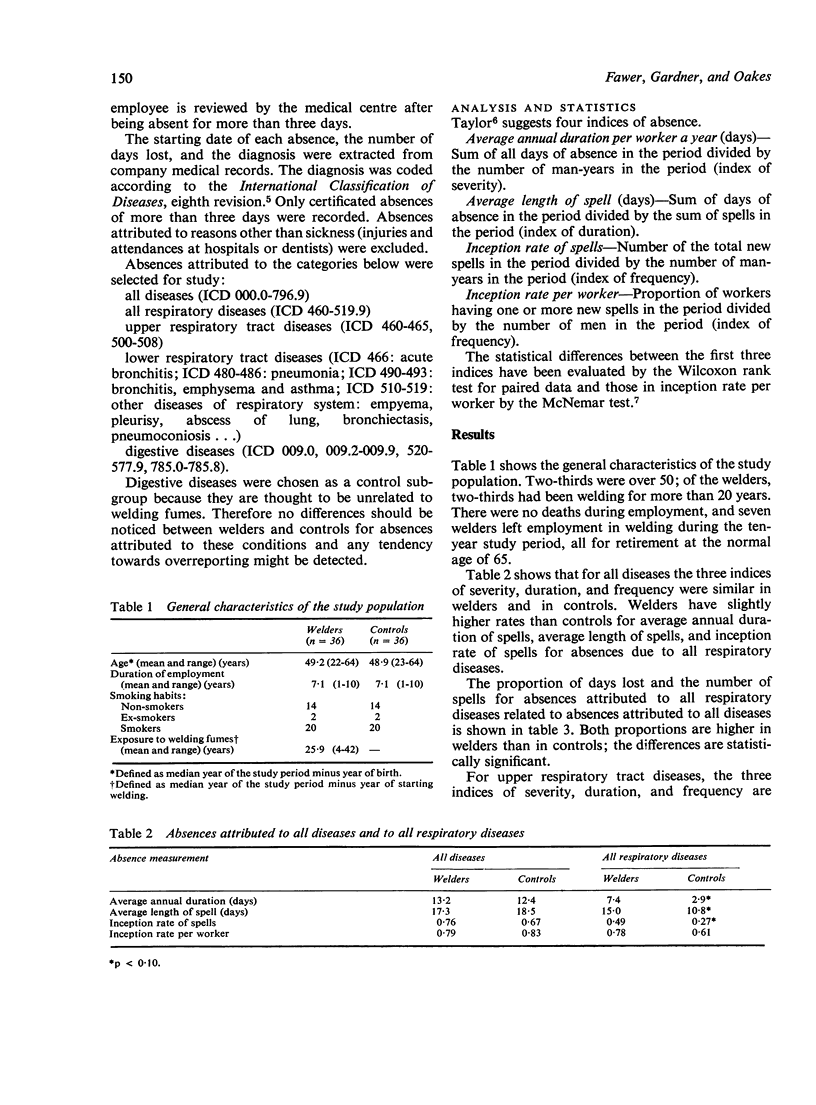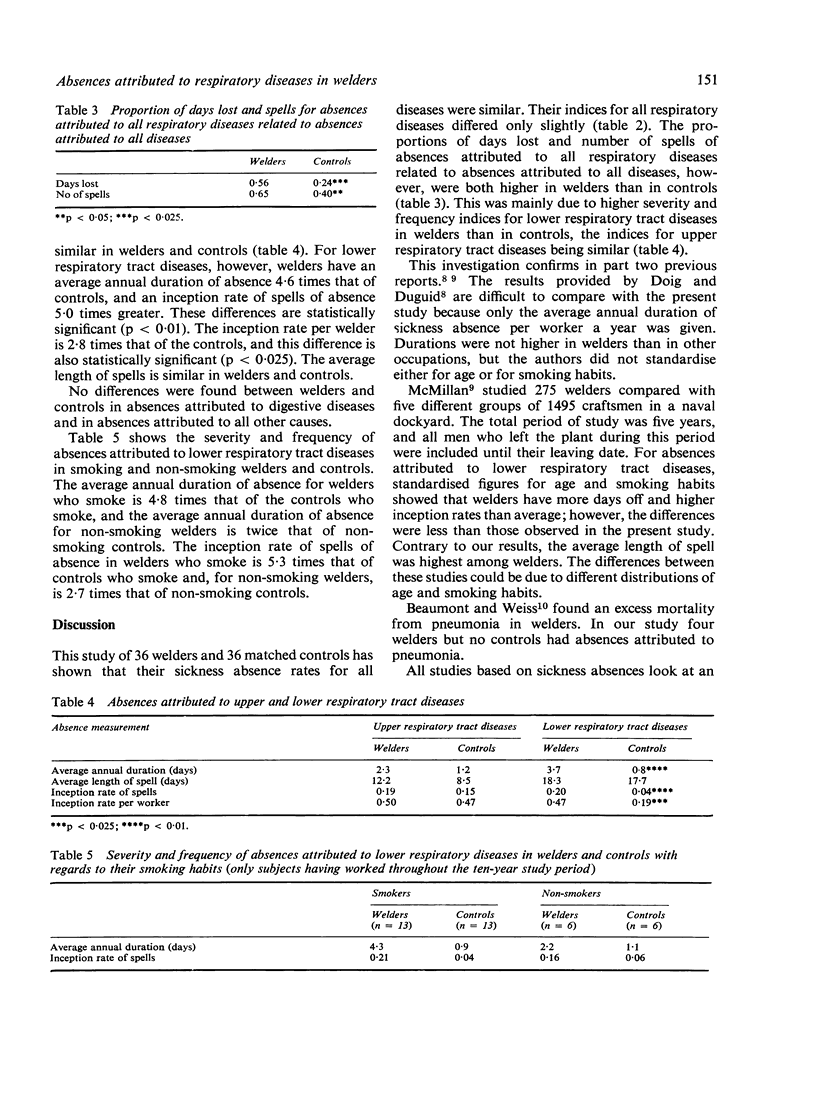Abstract
Certified sickness rates of 36 male welders were examined for the period 1970-9. They were compared with 36 male controls from the same petrochemical plant, matched for age, smoking habits, duration of employment, and social class. Indices of severity (average annual duration), duration (average length of spell), and frequency (inception rate of spells and inception rate per worker) were calculated. Absences for all diseases were similar, but absences attributed to respiratory diseases were slightly higher in welders in severity, duration, and frequency. The proportion of days lost attributed to respiratory diseases was 2.3 times higher in welders compared with controls. This was due to a large increase in absences attributed to lower respiratory tract diseases, the ratio of welders to controls being more than four to one for both severity and inception rate of spells. The comparison between welders and controls in smokers and non-smokers confirms other studies which show that smokers tend to be more affected by welding fumes than non-smokers.
Full text
PDF



Selected References
These references are in PubMed. This may not be the complete list of references from this article.
- Akbarkhanzadeh F. Long-term effects of welding fumes upon respiratory symptoms and pulmonary function. J Occup Med. 1980 May;22(5):337–341. doi: 10.1097/00043764-198005000-00007. [DOI] [PubMed] [Google Scholar]
- Beaumont J. J., Weiss N. S. Mortality of welders, shipfitters, and other metal trades workers in boilermakers Local No. 104, AFL-CIO. Am J Epidemiol. 1980 Dec;112(6):775–786. [PubMed] [Google Scholar]
- Fogh A., Frost J., Georg J. Respiratory symptoms and pulmonary function in welders. Ann Occup Hyg. 1969 Oct;12(4):213–218. doi: 10.1093/annhyg/12.4.213. [DOI] [PubMed] [Google Scholar]
- HUNNICUTT T. N., Jr, CRACOVANER D. J., MYLES J. T. SPIROMETRIC MEASUREMENTS IN WELDERS. Arch Environ Health. 1964 May;8:661–669. doi: 10.1080/00039896.1964.10663737. [DOI] [PubMed] [Google Scholar]
- McMillan G. H. Studies of the health of welders in naval dockyards. Ann Occup Hyg. 1978;21(4):377–392. doi: 10.1093/annhyg/21.4.377. [DOI] [PubMed] [Google Scholar]
- Rushmore C. H., Youngblood S. A. Medically-related absenteeism: random or motivated behavior? J Occup Med. 1979 Apr;21(4):245–250. [PubMed] [Google Scholar]
- Taylor P. Sickness absence: facts and misconceptions. J R Coll Physicians Lond. 1974 Jul;8(4):315–333. [PMC free article] [PubMed] [Google Scholar]


